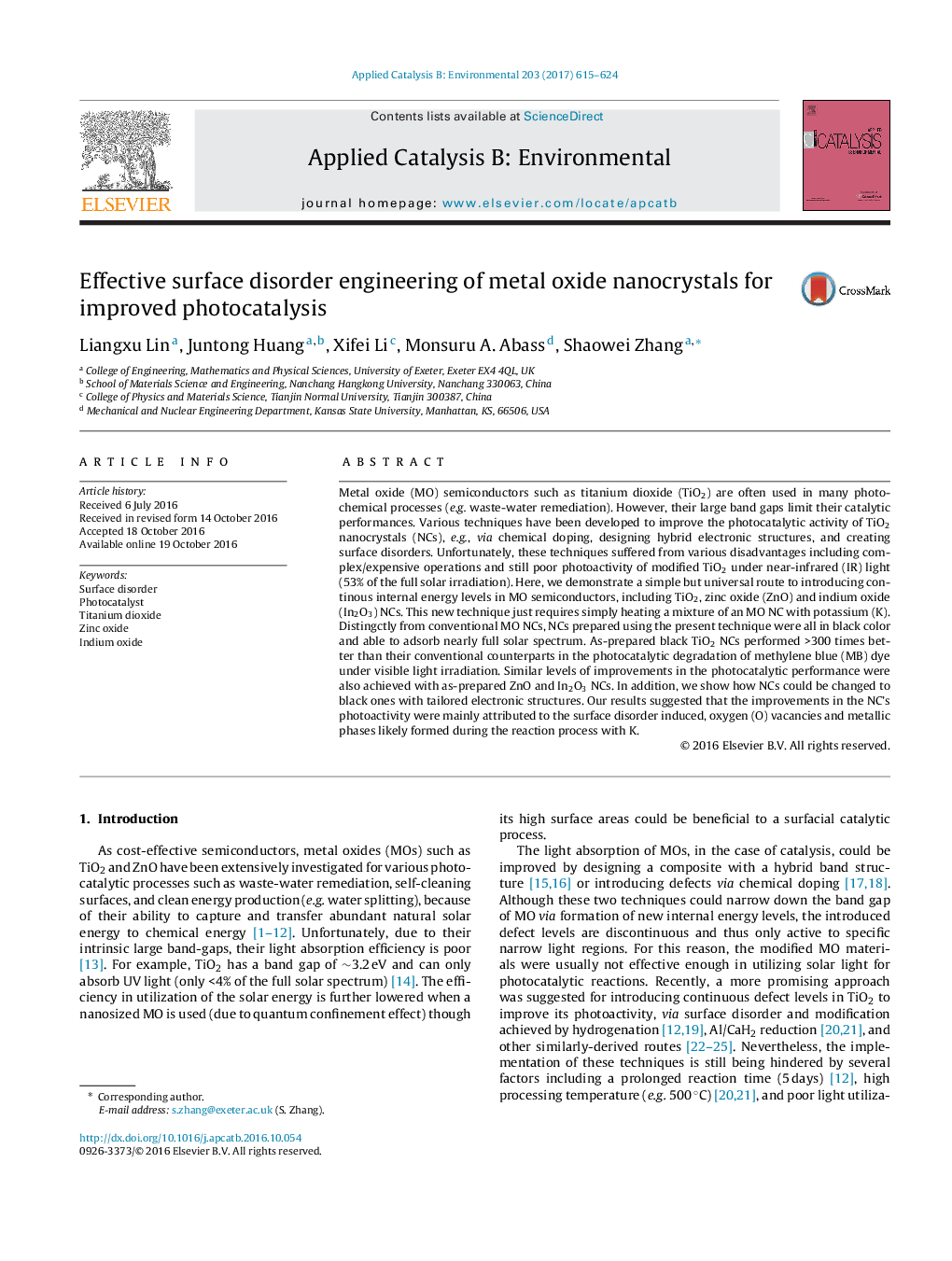| Article ID | Journal | Published Year | Pages | File Type |
|---|---|---|---|---|
| 6454535 | Applied Catalysis B: Environmental | 2017 | 10 Pages |
â¢A simple and universal technique has been developed to disorder the surface of metal oxides.â¢The modified metal oxides are highly efficient to adsorb nearly full solar spectrum.â¢These simply modified metal oxides are highly efficient for photocatalysis.
Metal oxide (MO) semiconductors such as titanium dioxide (TiO2) are often used in many photo-chemical processes (e.g. waste-water remediation). However, their large band gaps limit their catalytic performances. Various techniques have been developed to improve the photocatalytic activity of TiO2 nanocrystals (NCs), e.g., via chemical doping, designing hybrid electronic structures, and creating surface disorders. Unfortunately, these techniques suffered from various disadvantages including complex/expensive operations and still poor photoactivity of modified TiO2 under near-infrared (IR) light (53% of the full solar irradiation). Here, we demonstrate a simple but universal route to introducing continous internal energy levels in MO semiconductors, including TiO2, zinc oxide (ZnO) and indium oxide (In2O3) NCs. This new technique just requires simply heating a mixture of an MO NC with potassium (K). Distingctly from conventional MO NCs, NCs prepared using the present technique were all in black color and able to adsorb nearly full solar spectrum. As-prepared black TiO2 NCs performed >300 times better than their conventional counterparts in the photocatalytic degradation of methylene blue (MB) dye under visible light irradiation. Similar levels of improvements in the photocatalytic performance were also achieved with as-prepared ZnO and In2O3 NCs. In addition, we show how NCs could be changed to black ones with tailored electronic structures. Our results suggested that the improvements in the NC's photoactivity were mainly attributed to the surface disorder induced, oxygen (O) vacancies and metallic phases likely formed during the reaction process with K.
Graphical abstractMetal oxide nanocrystals (NCs) such as TiO2, ZnO and In2O3 can be readily changed to their black counterparters via simple reacting with potassium. This change made NCs active for nearly full solar spectrum and highly efficient for solar-driven catalysis.Download high-res image (248KB)Download full-size image
